Hal Jespersen's D-Day Anniversary and Patton Tour, June 2019
This is my travelogue for the Stephen Ambrose Historical Tours event, “D-Day 75th - Patton’s 3rd Army Tour,” May 30–June 13, 2019. Since this is a very long report, I have broken it into three segments, as follows:
- England, May 29–June 2
- Normandy, June 3–8 (this page)
- To Luxembourg and the Start of the Bulge, June 9–10
- Concluding the Bulge, to the Rhine, and Final Thoughts, June 11–13
Monday, June 3 — Cherbourg, Utah Beach

An early morning as we got hotel breakfast bags at 6 am and departed at 6:30 for the port at Poole, which was pretty close. It took quite a while to get our bus through the passport checks, but we boarded the vessel Barfleur by 8 and set sail around 8:45. It’s a rather large RORO ship, like a small cruise ship, owned by the Brittany Ferries company. And the facilities made it a very comfortable journey. We arrived in Cherbourg about 2:15.
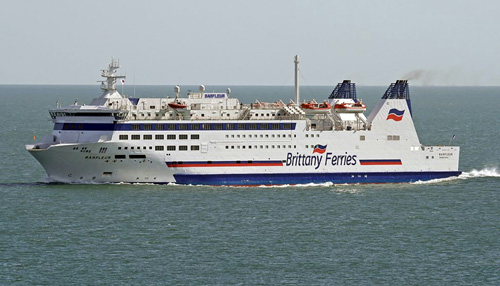
We picked up our Dutch bus and drove about an hour to Ste Marie du Mont, a rally point for the 101st Airborne soldiers (because of a prominent church steeple), where we saw a big gathering of US Army vehicles and and encampment of reenactors. At first I thought these must be Americans, but I later learned that they are almost all Europeans—Germans, French, Italians, Czechs, Russians, etc. All these vehicles were probably bought as war surplus and driven here. Then we drove to Utah Beach, where we saw even more reenactors. (We saw them all week, so I won’t mention again.) We were at Exit #1, and Kevin told us all about Teddy Roosevelt Jr’s role in the battle. We went to the Utah Beach museum, which was quite good. It had exhibits about the German defenses, the occupation, the French resistance, and the prominent officers involved, as well of course as the battle. They had on display an LVT-2 Water Buffalo (similar to the LVT-1 Alligator), and a B-26 Marauder.
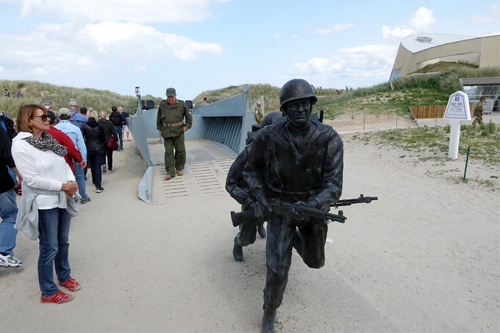
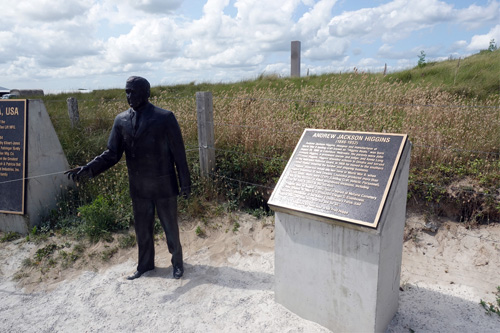
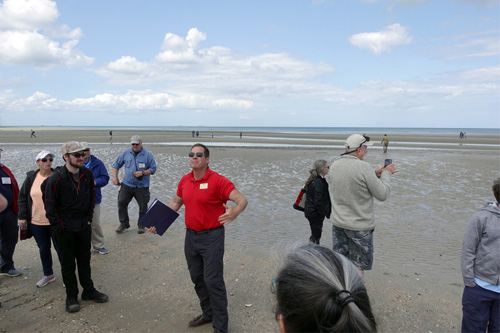
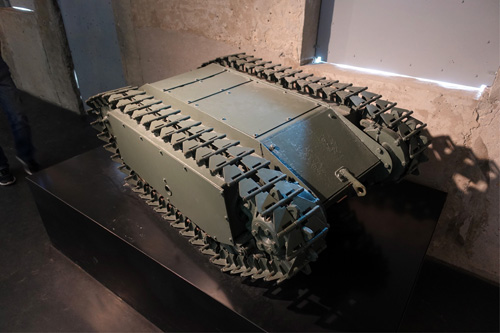
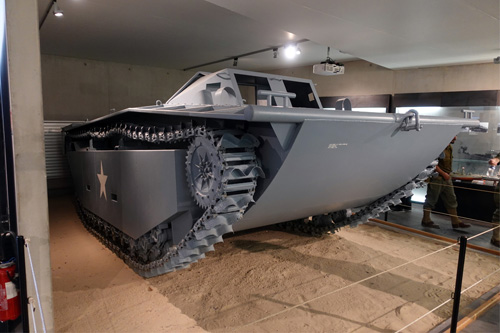
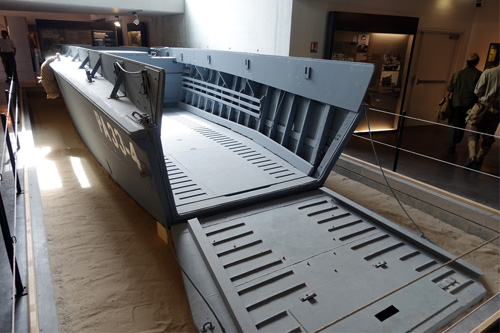
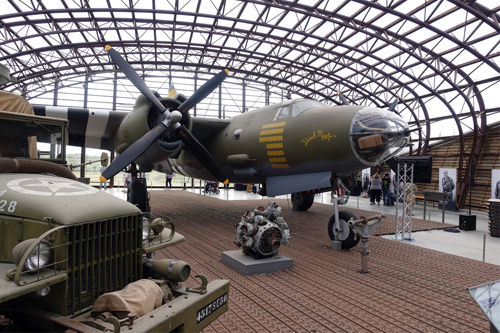
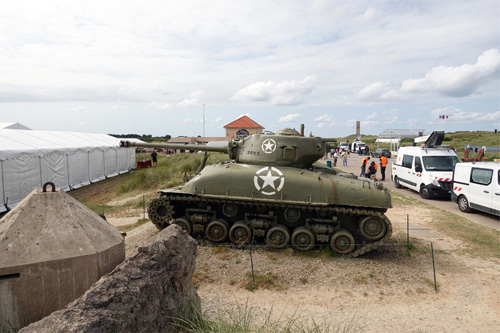



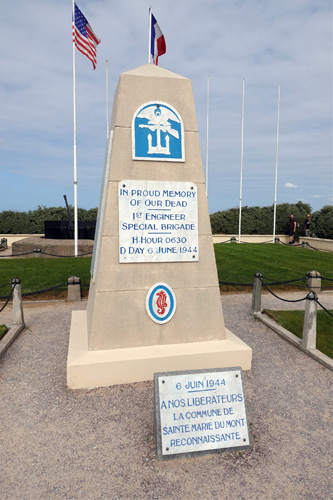
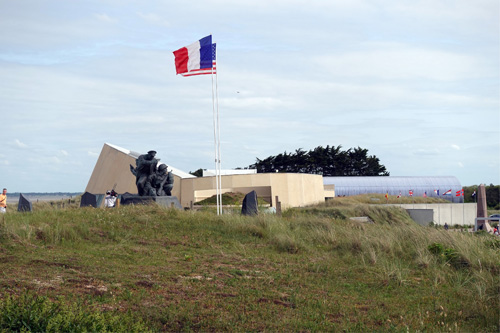

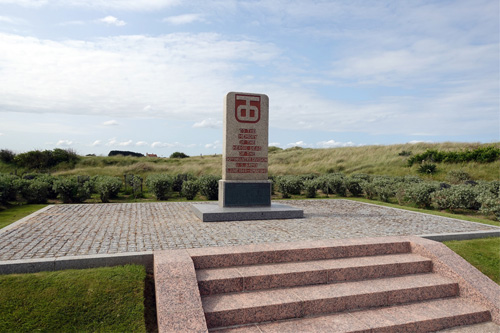
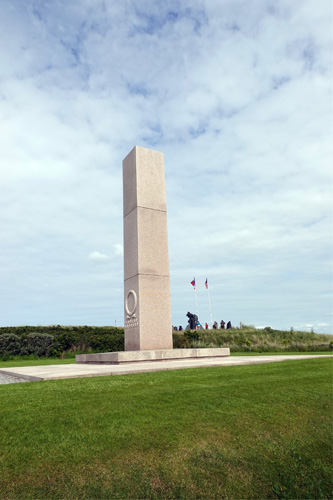
Because of the heavy tourist impacts, Kevin altered our schedule a bit and we slipped in some airborne visits that were due later in the week. We stopped at the Major Dick Winters statue to talk about his career, and then through a live electric fence to a field at Brécourt Manor, where E/506 had an important action against four German guns. Kevin talked about some of the inaccuracies in the HBO series; in particular, the show had the Germans in trenches, but they were simply dug in to the hedgerow.
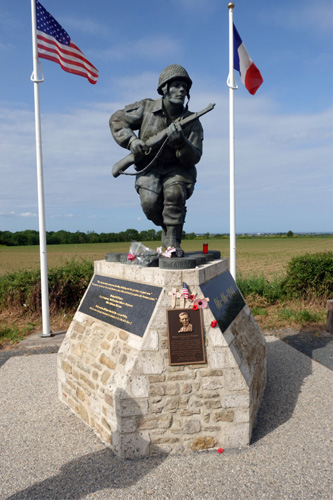
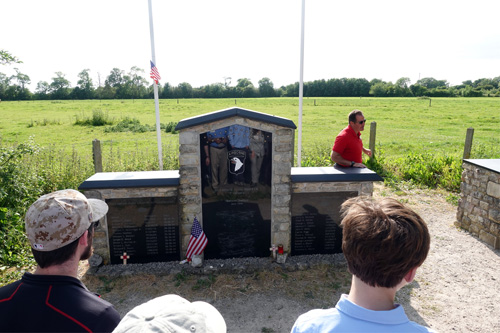

We checked into our new hotel in Cherbourg, the Mercure City Center, which is a very nice, very modern hotel. We had a decent group dinner in their restaurant.
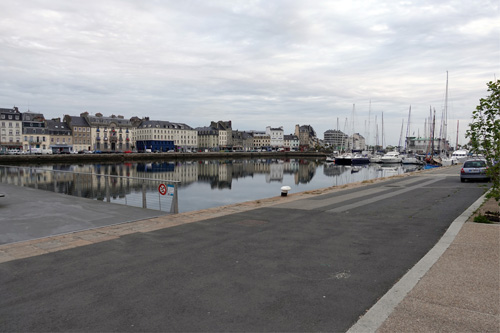
Tuesday, June 4 — Omaha Beach
We had an early start. On the bus, Kevin continued a narrative about Patton prior to France, today examining the Sicily Campaign and the notorious slapping incident. Our first stop was the famous town of Ste Mère Église, which was fortunately free of tourists at 8 am. We saw the dummy parachutist on the church, which Kevin explained was supposed to be John Steele, the part played by Red Buttons in the movie The Longest Day, but he said there is good evidence that Steele could not have been dropped there. He did talk about Ken Russell on the church and how he was saved by John Ray. We walked over to an old building next to the elementary school, where Andrew Tuck of F/506 came down on a chimney.
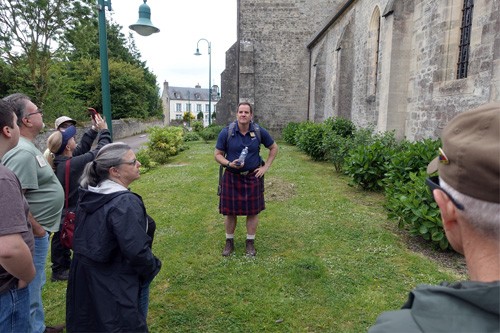
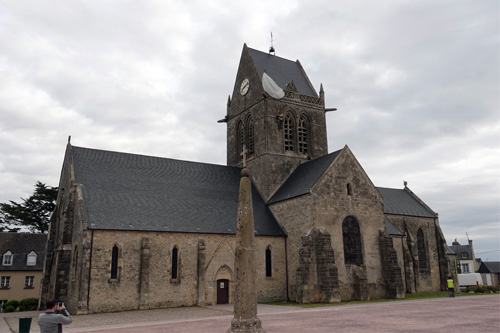

Next a long ride to the very easternmost part of the battle, Bénouville, where the British 6th Airborne Division conducted a glider-borne raid early on June 6 to capture the Pegasus Bridge on the Caen Canal/Orne River, securing the flank of Sword Beach. We visited the first three glider landing/crash sites and talked about Major John Howard, who commanded the raid. (By coincidence, on the ferry ride over, some in our group happened upon Howard’s daughter, who was traveling for a memorial ceremony.) Kevin said that the special operators who raided and killed Osama Bin Laden studied this raid as part of their preparations. We visited the local museum, which was quite excellent. In addition to lots of detail about the raid, its personnel, and glider technology, they talked about the Melville Battery, the Dives River Bridge, and other “eastern flank” battles, including Operation Goodwood. Outside they had a glider replica—of the hundreds built, exactly zero originals remain—an M3/M5 halftrack, and a Centaur Mark IV tank.
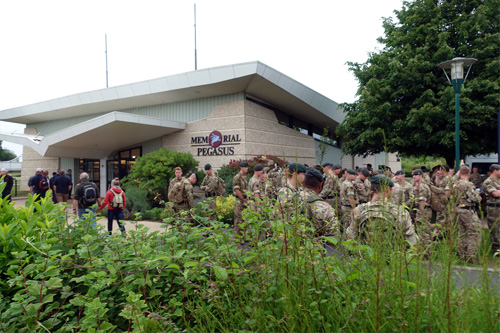
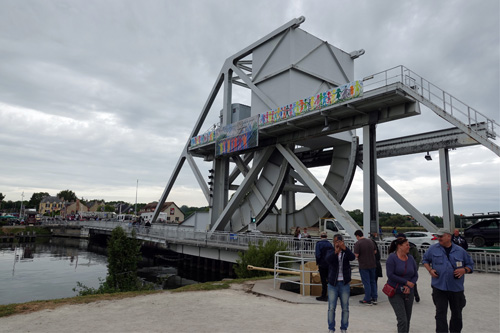
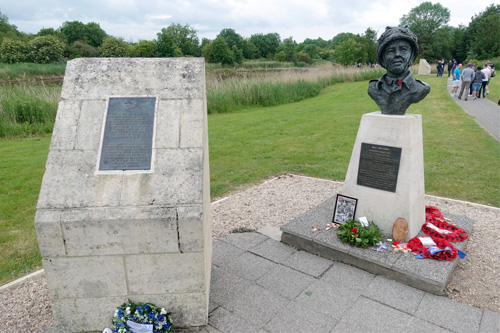
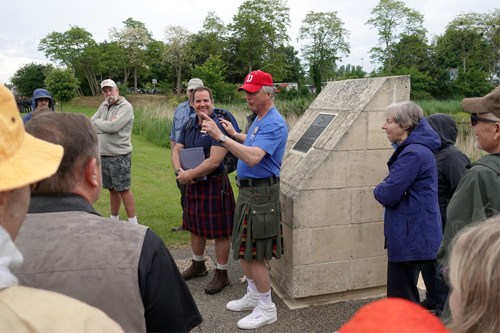
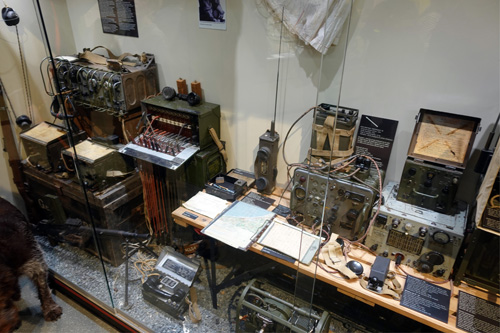
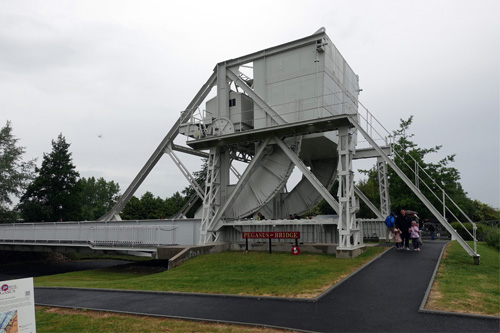
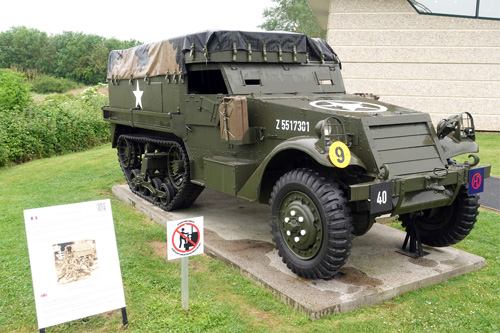
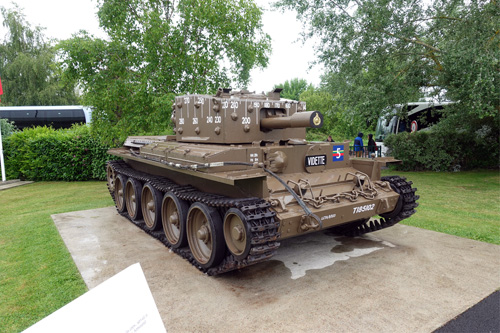
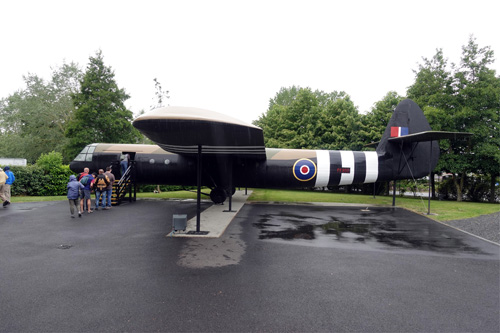
Next up was Arromanches les Bains, to catch a view of the Mulberry artificial harbor off Omaha, or at least some remnants of it. I thought this would be an obscure stopping place, but there must have been 20 tour buses parked when we arrived. In addition to memorial markers, there was an interesting Falaise Memorial, remembering that that small city had lost 80% of its population to the affects of the war.


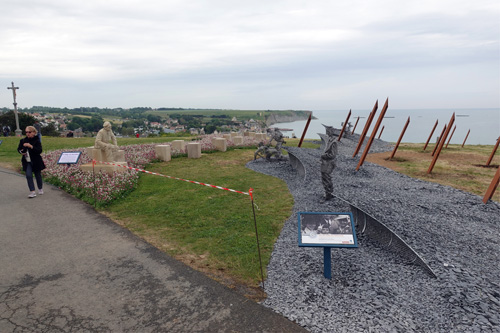
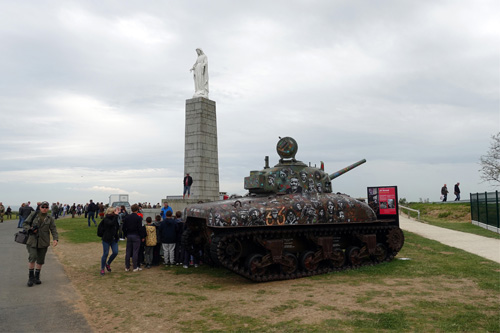
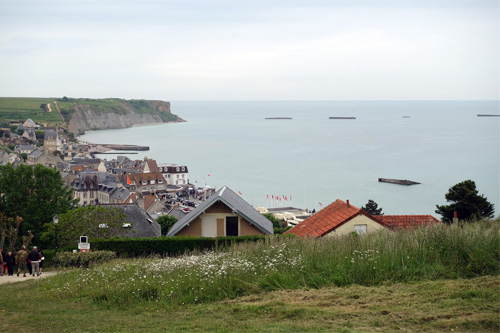
At the Colleville Draw, Kevin told us the tale of Bob Watson, a naval signalman who was thrown overboard and had numerous adventures with the infantry on June 6. We walked over a quarter mile on “shingle,” which is a surface layer of small, slippery cobblestones, and which provided some significant vehicle obstructions, even to tanks. Reaching the Cabourge Draw, we admired the modest cliffs on this end of Omaha. Both of these stops were in the Fox Green beach area, the easternmost end of Omaha. Scenes from walking on Omaha Beach:
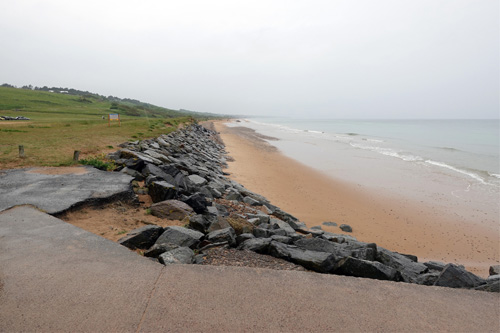
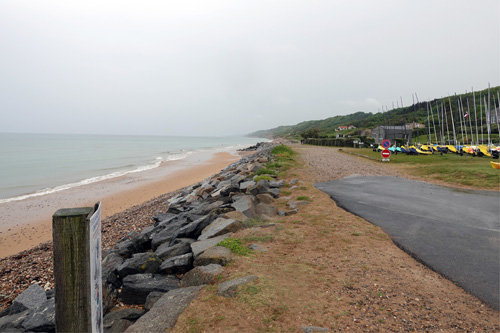
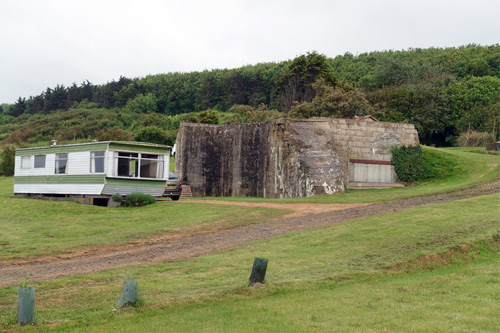
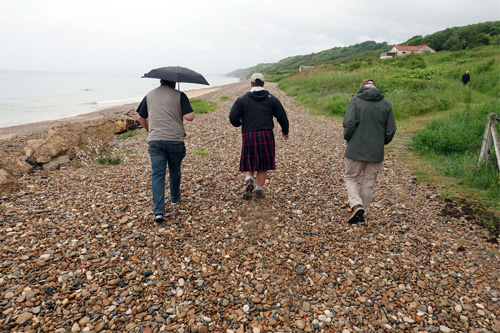


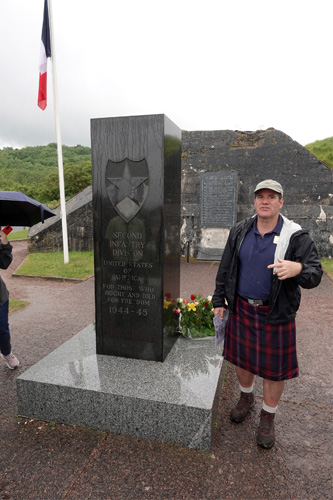
West of the US Cemetery (which we will visit on June 6), in what was called the St Laurens Draw, we checked out a 75mm bunker and climbed a hill to see a view that matched a photo of the 2nd Infantry Division on June 7. The Vierville-sur-Mer Draw was the area of heaviest fighting, Dog Green Beach, initially with A/116. We climbed up a steep hill to visit a bunker that had housed a 72mm cannon. There were monuments to the US National Guard, the 116th Infantry, and the 29th I.D. As we drove up the hill to exit, we passed by yet another museum, but we didn’t stop.
Scenes at St Laurens Draw:

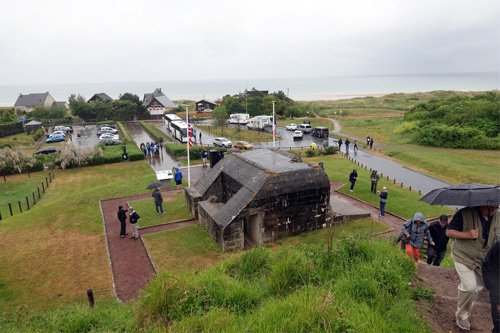
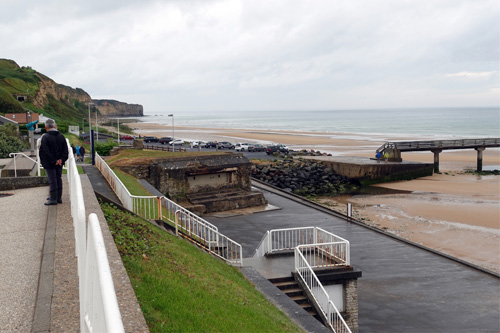
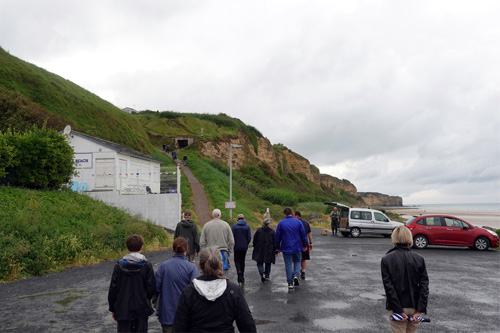

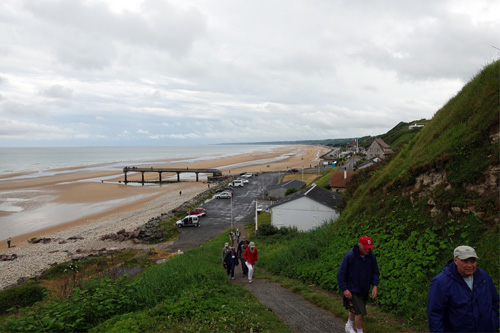
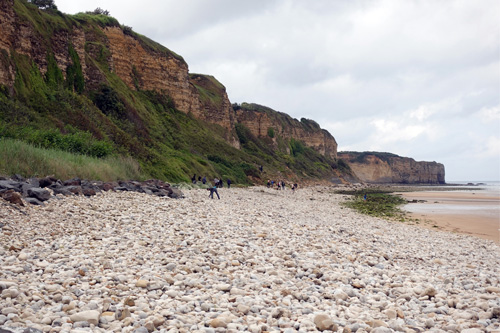

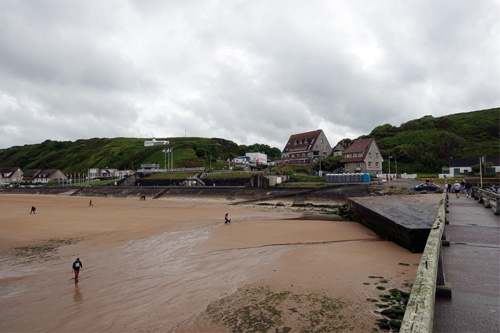
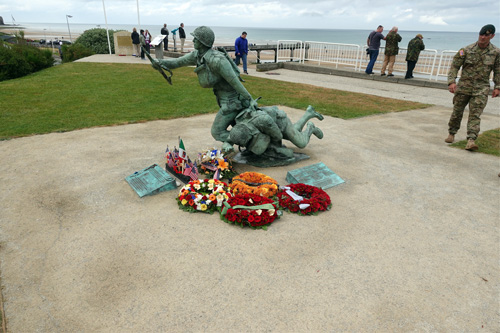

Finally we visited the famous Pointe du Hoc. We were on a slight time crunch, so rushed through a little. It is a very large area, pockmarked by deep bomb craters, and riddled with impressive concrete gun emplacements. Of course, the cliffs assaulted by the 2nd Ranger Battalion were the most impressive part of the story. We drove back to Cherbourg, about an hour, and had another group dinner in the hotel. Oh, by the way: while doing lengthy drives today, we watched the DVD of The Longest Day.

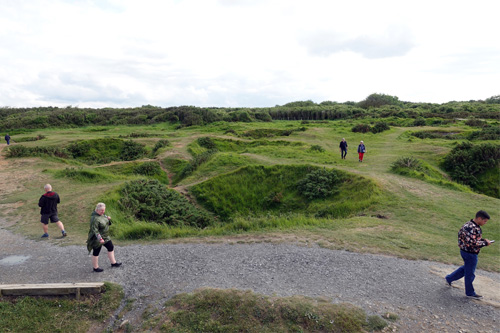
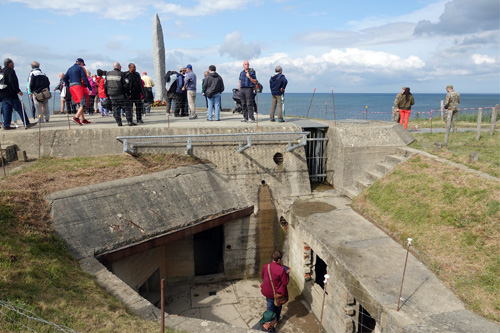
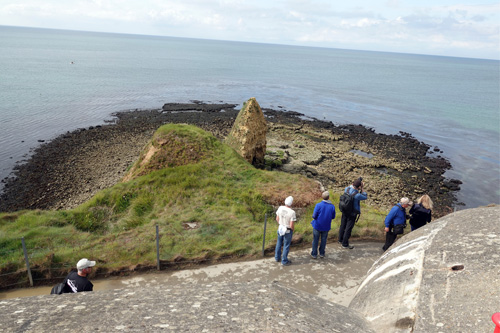

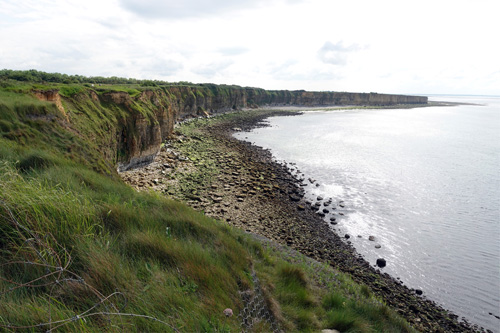
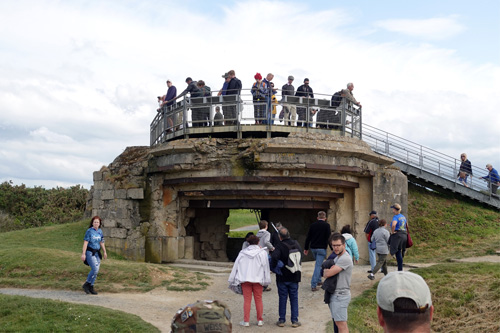
Wednesday, June 5 — Airborne Day
We checked out of our Cherbourg hotel and started a day devoted to various airborne battles, and because of some logistical issues, this was not my favorite day. On the bus we watched the third episode of Band of Brothers, about the battle of Carentan. But first we stopped west of Ste Mère Église on the Menderes River, for the action on the La Fière bridge and causeway, which occurred June 6 through 9, involving some 82nd Airborne parachute battalions and some glider infantry. There is a statue of “Iron Mike” and a memorial. Nearby is a memorial to PFC Charles DeGlopper, who was awarded the Medal of Honor for holding off the Germans with only his BAR.
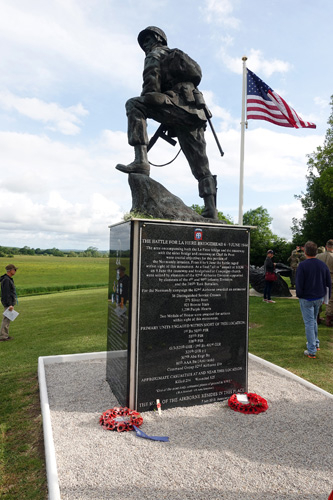

At Cauquigny church, we saw where the 82nd fought off some Germans manning French light tanks. There is an interesting stained glass window memorializing the 82nd. Then we drove to Beuzeville-au-Plain to see the site of a C-47 crash that claimed the life of Lt Thomas Meecham, the commander of E/506, on D-Day, which is why Lt Dick Winters took over Easy Company in the Band of Brothers. TV really affects history. We also took a walk through some modest hedgerows to discuss combat in that environment.
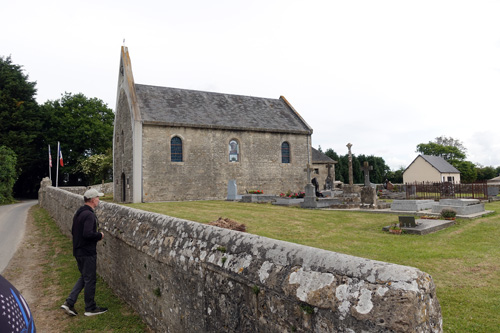
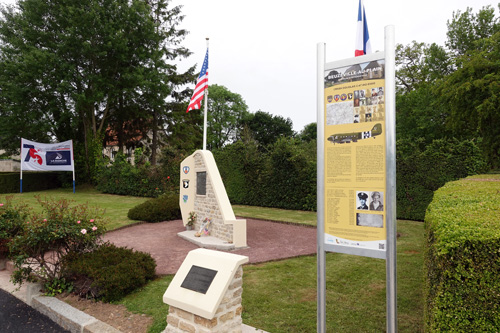
In Angoville-au-Plain we visited a church that was used as a hospital, featuring blood stains on some of the pews. They had a few airborne stained glass windows, too, as well as a repaired hole in the ceiling where a dud mortar round crashed through. While we ate our box lunches, we witnessed a few squadrons of C-47s dropping paratroopers nearby Carentan. This airborne activity may have been a reason for the severely deadlocked traffic in the area, with the Gendarmes blocking off roads.
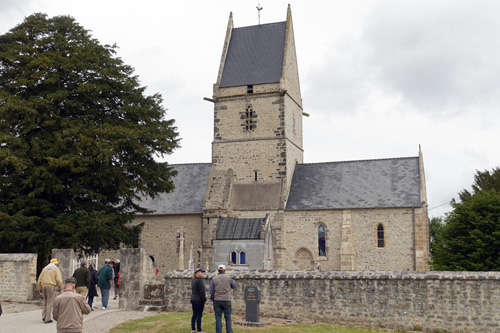

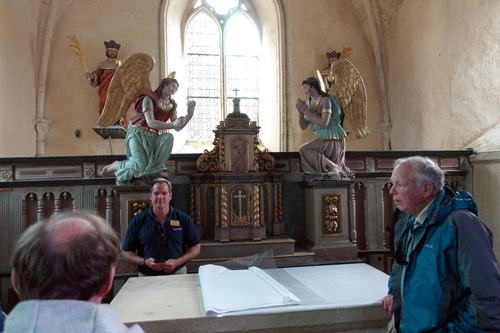
Some unusual stained-glass:

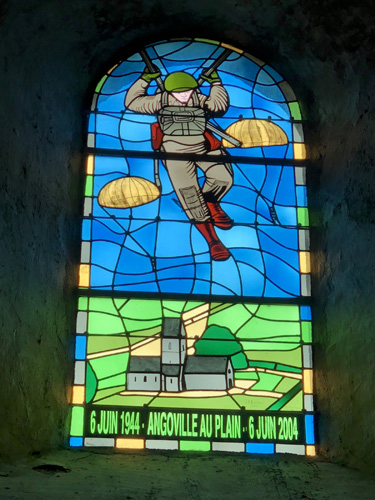
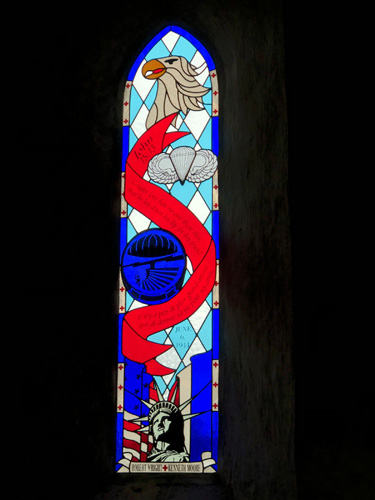
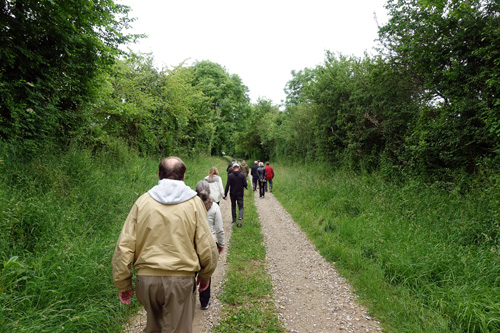
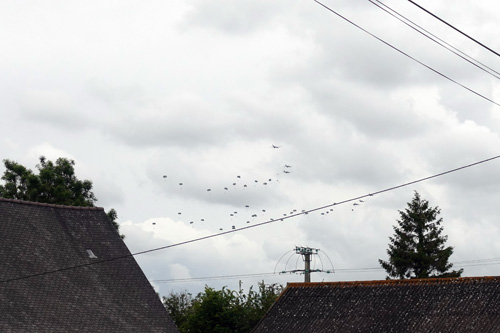
Finally we got into Carentan, parked at the railroad station, and waited 40 minutes for everyone to share a single restroom. Then we marched off on a long route that got us into position to follow the attack of E/506 on June 12. About the only recognizable feature from the TV episode was the building with three dormer windows, where they first engaged a German machine gunner. It’s now a bar. Kevin said that the German commander had determined he could not actually defend the town, so he pulled out and left a few MGs and snipers behind. So it doesn’t seem like a really significant battle (although this crossroads town was important, where the two US beachheads were finally united), but Kevin reminded us that it was the subject of a hit TV miniseries. Enough said.
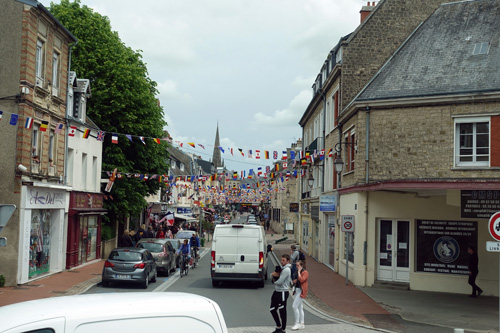

After about 40 minutes we reached our new hotel, the Ibis Budget in Coutances. It was quite spartan, but was comfortable enough. (Having two Normandy hotels, one of which was rather spiffy and the other bare-bones, was a consequence of a last-minute bankruptcy of the planned hotel in Barneville-Carteret, causing a big logistical scramble a couple of months back.) Dinner was 15 minutes away in a typical small family-run restaurant, Auberges des Bonnes Gens.
Thursday, June 6 — D-Day!
This is going to be the Longest Day again. We picked up a breakfast bag at 4:45 am and were on the road by 5:15. The police had things well organized and after a brief delay we got into a caravan of buses led by a motorcycle on N13, the major motorway through the region. We reached Colleville-sur-Mer by 6:45, went through security checks, and were in our seats by 7:30. Unfortunately, the ceremony didn’t start until 11:30; I used the open time to wander around the beautiful cemetery—9,388 graves—and listen to the bands. There were two: some French Army band, which was really excellent, with a very strong brass section, and the USAEUR band, which seemed weak in comparison. (My favorite tune of theirs was the St Louis Blues March, in close to the Glenn Miller arrangement.) There was also choir/chorus from the 82nd Airborne.

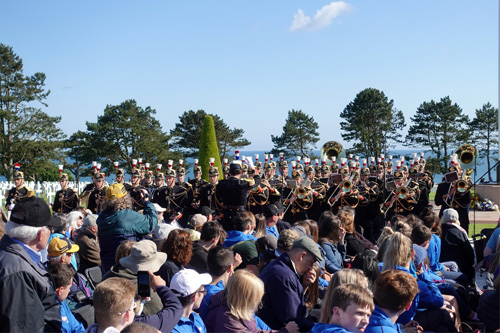
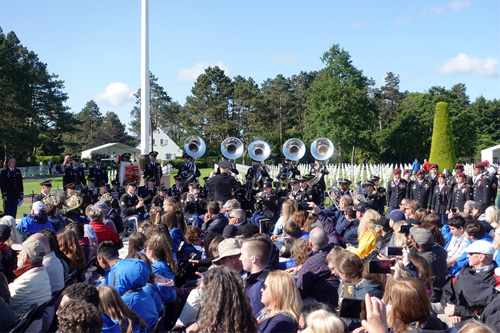

The 18,000 of us in the audience got to see, by big video screens, the arrival of Air Force One (although it was a smaller plane, not the 747), and we could see the arrivals of the two presidents in their helicopters. Pres. Macron had one helicopter, but Pres. Trump had a fleet, with Ospreys escorting and two identical Marine One Sikorskys, one presumably decoying. The ceremony was 30 minutes late because of delays on Macron’s part. The presidents stood on stage with dozens of D-Day veterans behind them, including our own Steve Weiss. It was unclear to me how many were actual D-Day vets versus WWII vets—numbers kept changing—but Pres. Trump told the stories of some of them and they brought many a tear and standing-Os.
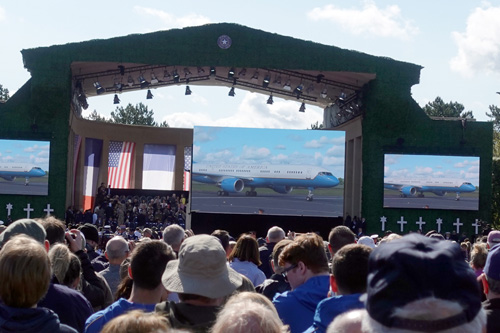
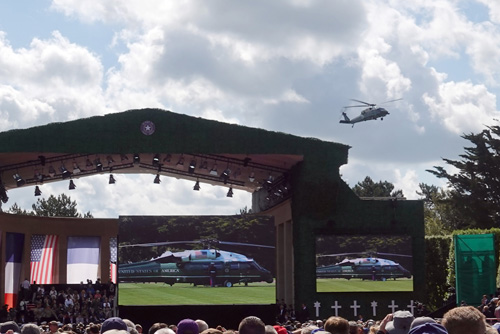
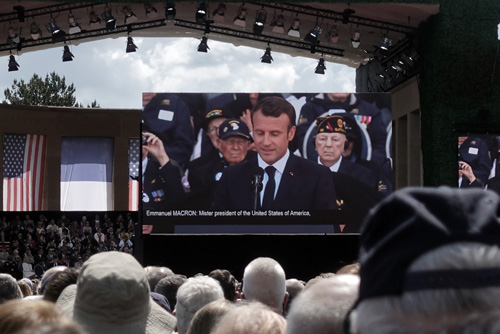

Macron spoke in French, of course, with tiny, tiny subtitles on the video screen, but he electrified the crowd when he turned to the vets and said in perfect English: “We know what we owe you, veterans, our freedom. On behalf of our nation, I just want to say thank you,” Trump spoke at length and I thought it was a terrific speech, without any political content or his standard ad-libbing. All about heroism and thankfulness. There was all the usual ceremonial stuff, including the national anthems, 21 gun salute, etc. At the end there were about six flyovers, of jets, modern cargo planes, and C47s.
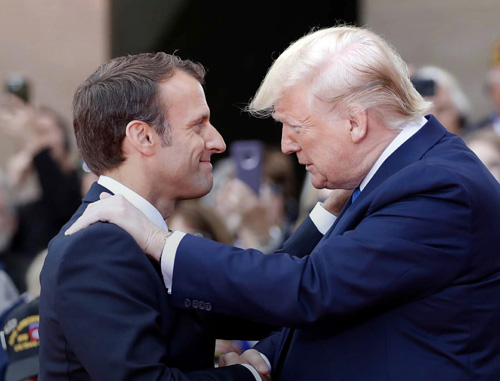
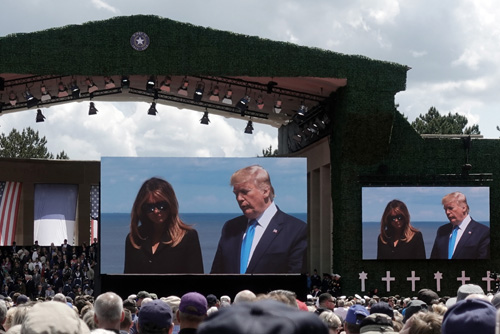
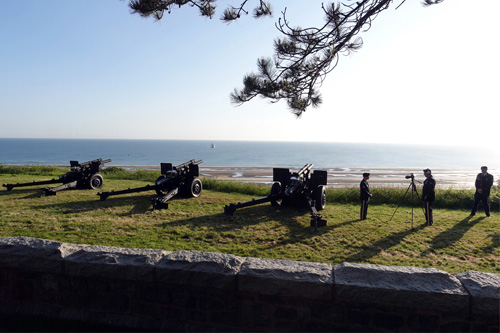

The following is a brief compilation of videos I took of the overflights. The two final ones (at about 2 mins 13 secs) are the most interesting:
It took about two hours to get out; I think every bus in northern France was lined up. We finally got back to Coutances by 5 pm. So it was a 12-hour journey for a two-hour ceremony, but it was really worth it. Dinner at the same little restaurant.
Friday, June 7 — Néhou, Avranches, Mortain
We started following Patton by visiting his first headquarters on the Cotentin peninsula, a small town 45 minutes north of our hotel, Néhou, where he set up on July 10. There is a park called Camp Patton that has an M4A1 on display as well as a few monuments and signs. Along the way Kevin described Patton’s activities in the UK, training in secret the green units that would make up Third Army, including the Knutsford incident that got him into hot water again. He said that, contrary to the movie, the transgression was not failing to credit Russia as an ally, but the fact that any publicity at all emerged from his impromptu speech. Kevin also speculated how the invasion would have been arranged with Patton in overall command: he probably would have staged a night attack at the Pas de Calais.
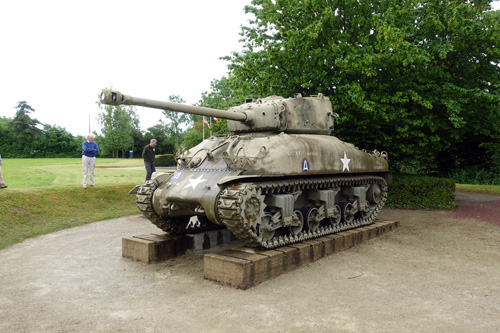
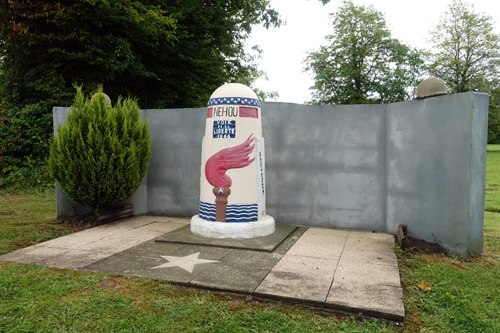
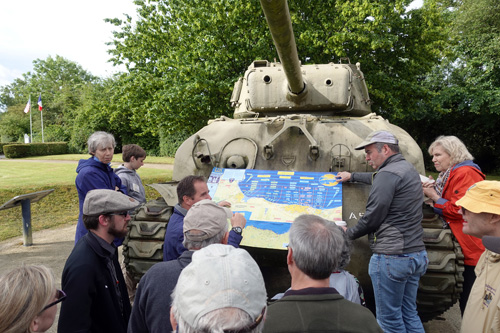
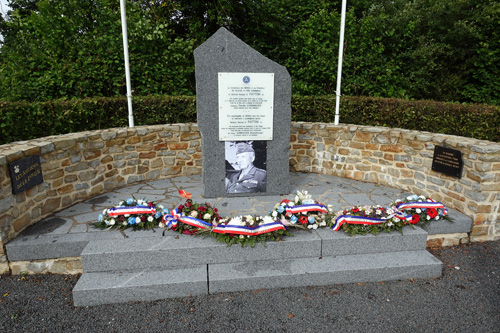
Next was a 90-minute drive south to Avranches, where the big breakout started for Third Army, following Operation Cobra. We had a bus discussion of tank production issues, including the mistaken notion that Patton opposes the introduction of the Pershing tank into Third Army. We watched a DVD from the History Channel called Patton 360, the episode on the breakout. Kevin is featured as a talking head in the video. The city is on a prominent hill, and at one point we could see Mont St Michel off in the distance. We had a nice (but quite lengthy) lunch at a restaurant named 5ieme (Fifth) Avenue, then stopped at the main square, where there is an enormous monument to Patton’s army, another tank (an M4A4T(75), where the 'T' indicates that it was upgraded after the war and used by the French army), and a partial statue of Patton wearing his tanker football helmet.
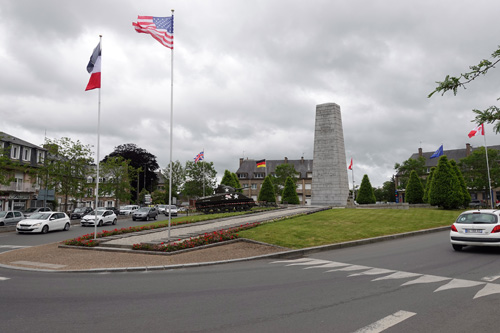
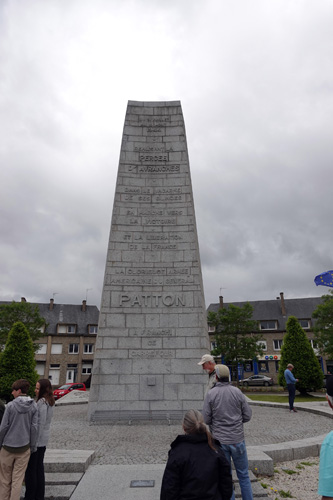
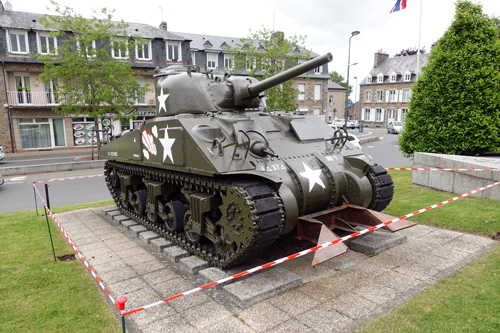
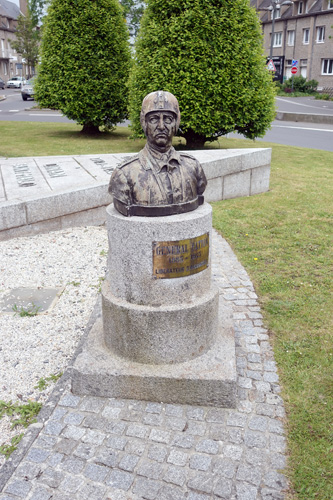
On the way out of town, Kevin discussed the Red Ball Express and segregation issues in the army. We followed the route of the 4th and 6th Armored Divisions. Kevin credited Troy Middleton with the assignment of these two units to proceed side-by-side in the breakout. We crossed over the famous stone bridge at Pontaubault; it was damaged but still standing, a critical factor in the breakout. After about 40 minutes we reached Mortain, also featuring a prominent hill, named Montjoie, or Hill 314. It was here that Hitler launched a big (unsuccessful) attack to split the Third Army by driving for Avranches. Up the hill we walked around to see the position of the “lost battalion,” the 30th Division unit that was besieged for seven days, suffering 450 casualties out of 700. There is a small chapel up there and a view stand, but the weather was cold, windy, and rainy by this time and visibility was very limited. Supposedly the view is breathtaking.
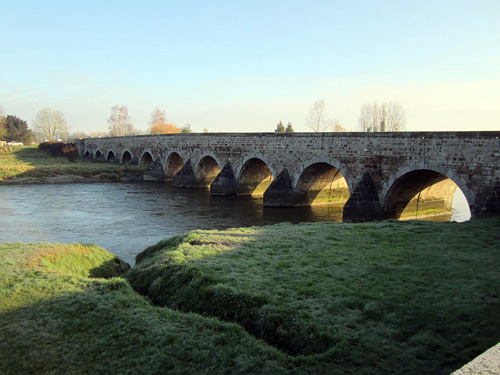


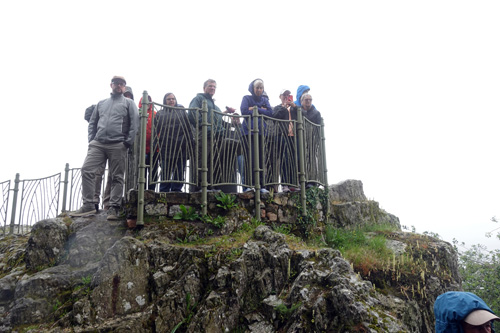
We were originally scheduled to stop in Mayenne to discuss the relatively obscure battle there, but because of the earlier delays and the bad weather, we drove directly to the town of Bagnoles de l’Orne and checked into the Manoir du Lys, a very nice spa/hotel out in the woods. Dinner was in the hotel restaurant.
Saturday, June 8 — Argentan, Chambois, Mont-Ormel, Reims
On the bus Kevin talked about the 90th Infantry Division and how it turned around its green reputation at the little-known battle of Mayenne. We also discussed briefly Patton’s capture of the Brittany peninsula. Then we began our day-long focus on the battle of the Falaise Gap, in which the German Army Group B, 23 divisions was enveloped. Forty minutes to the city of Argentan, where we stopped to look at a monument to the French resistance. In Chambois we saw a small castle and discussed how the Canadians, Polish 1st Armored, and US 90th Infantry Division met up, closing the gap that allowed 50,000 Germans to escape. Then we followed the Poles in reverse to Mont-Ormel, a prominent hill nearby.
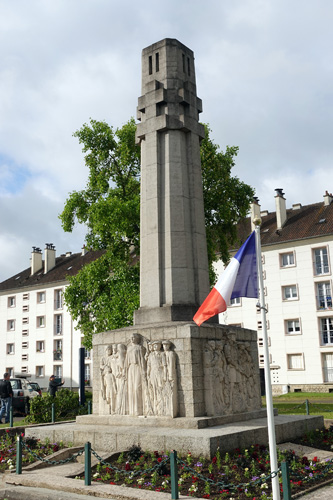
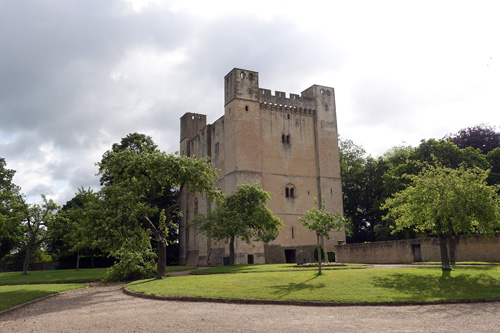
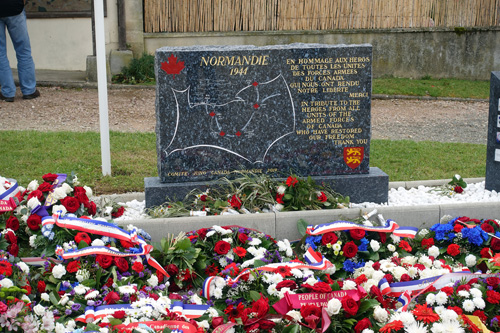
The memorial at Montormel (the modern spelling, I guess) has on display the ubiquitous M4A1 and an M8 Greyhound armored scout car. There is also an excellent museum that covers a lot of the Normandy Campaign. (In the bookstore I saw different languages that indicated the French say “Jour J” and the Germans “Tag X.”) We stood before a large panoramic window that had a wide view of the Dive Valley and a local guide gave a good, albeit heavily accented, description of the battle, including the German counterattacks against Mont-Ormel and Bousjos hill. The destruction of the area, called the Corridor of Death, and the German forces was awesome. He said it took 20 years to clean up the mess. For weeks, the skies were black with flies and the ground looked like there were patches of snow—maggots. He said the area looked like the aftermath of the Sommes and Verdun.

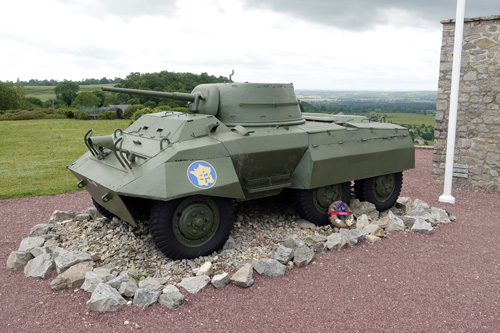
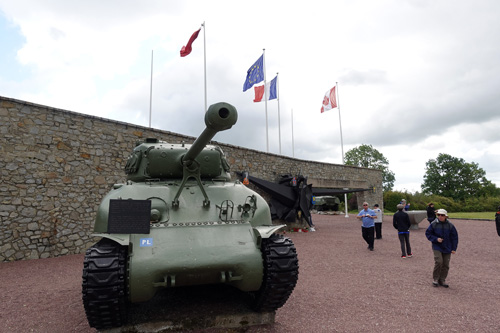
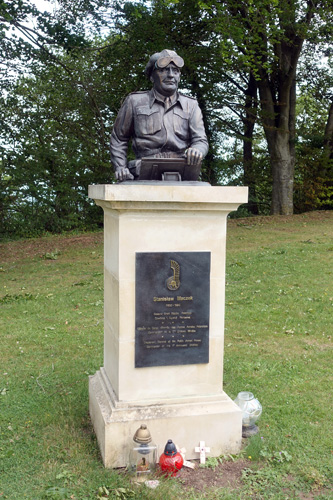
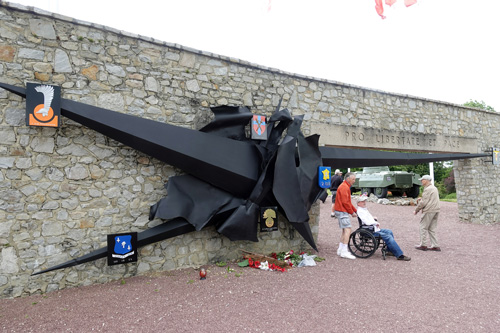
The bus ride to Reims was about 4.5 hours, skirting around Paris to the south, with two rest stops. We watched another episode of Patton 360 and then the movie Patton, which Kevin then deconstructed by pointing out all the errors and inconsistencies. We stopped at the Surrender Museum, but there was another bus present and we couldn’t go in and violate their occupancy restrictions. So we went to the hotel, the Mercure Reims Centre Cathedrale, which is very modern and nice. Also there was the Nigerian women’s soccer team, which I heard lost their World Cup match that night. I was a bit flustered when one of our tour group entered my room by mistake, indicating that the hotel has a limited number of key card codes. I found to my dismay that I left my bathroom kit in the previous hotel, so I had to go shopping for replacements. There are very nice pedestrian shopping areas near the hotel. Dinner was in the hotel restaurant.